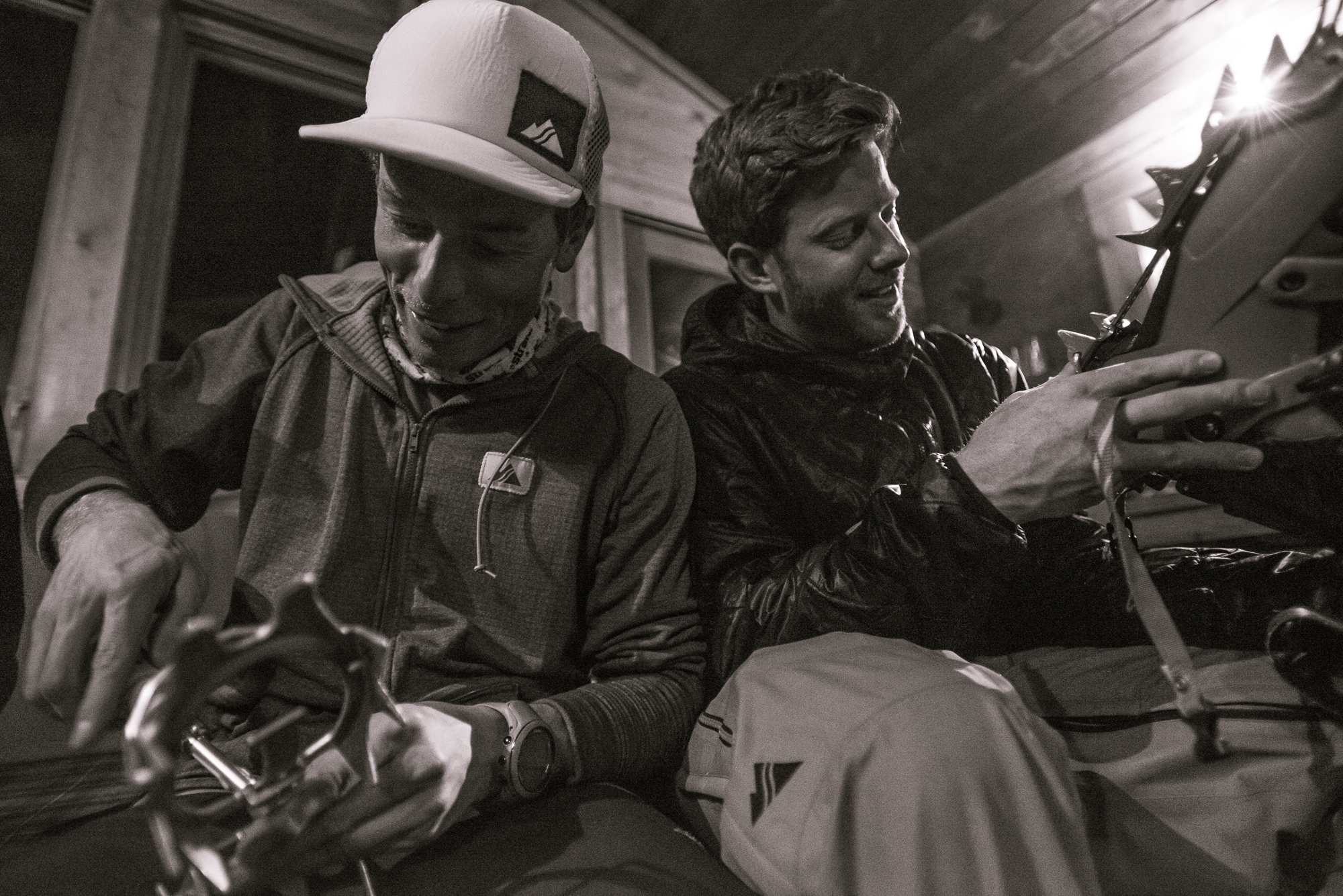Hut Brew

As the sun went down, after a hard day of shuttling people and gear from the end of the paved Castle Creek Road in Aspen, our group of 12 gathered tightly around a small, weathered table in the wood fire heated Green Wilson Hut. We drank beer, feasted on burritos and laughed about the struggles we’d endured that day.
One of the biggest pleasures and challenges of traveling through the mountains is route planning. There is something special about
There is something special about tracing crisp lines that represent beauty or danger”
sitting with trusted partners and running your fingers over a worn and creased piece of paper, tracing crisp lines that represent beauty or danger, easy steps or crushing labor. It feels especially potent when sitting in a tiny wooden shelter built by a previous generation of passionate mountain people. The fire crackled and hummed in the background while we drank beers brewed locally, specifically for us

Willis Brown and Duncan Clauss of Aspen Brewing Co. conceived this trip as the perfect way to craft their newest beer offering. The idea was to pre-brew small batches of several recipes for their Silver City Ale. Beer is basically a combination of the same simple ingredients and processes used to make bread: Yeast, grain, heat, time and water. Aspen Brewing Co. alchemists PJ Goudreault, Kyle Vetter and Jeff Moreland brewed varied combinations of these to make four different recipes for consideration of what would become the new style; they used two different yeasts (one sour and one not) and two types of grains (wheat and hops) for differentiation.
After climbing and skiing from the huts, the Strafe crew along with Clauss, Brown and I, planned to sit under the stars, buttressed by the Elk Mountains and sample each concoction.
He helped fit everyone’s crampons to their boots, explained how to carry axes and the theory of self arresting”
The group would vote on the best resulting combo and the first batch of Silver City Ale would be brewed with surprisingly uncomplicated home brew equipment, from snowmelt directly from the source.The first night as we sampled the prepared beer, Pete Gaston, co-founder of Strafe with his twin brother John, shifted into quiet and patient but pedantic guide-mode and explained the fundamentals of ski mountaineering to the brewery crew, mostly novices, for the adventure the next day. He helped fit everyone’s crampons to their boots, explained how to carry axes and the theory of self arresting—all skills that he would run the group through on-snow the next morning before they headed into the alpine.


As we dispersed to our own huts we walked into the sharp, clear high-country air under a visible Milky Way. Smoke from the remaining coals in the stained black stoves snaked skyward and dissipated into black. The silhouette of Castle Peak, our objective for the next morning, towered above us, glowing in the faint moonlight. It looked impossibly huge and far away. The vague night-before nerves mixed with a warm buzz from good company and consumption. Sleep came easy.
The next morning we awoke before first light to heavy winds battering the weathered walls.”
The next morning we awoke before first light to heavy winds battering the weathered walls. We briefly conferred and decided to postpone our start. The winds and clouds would keep the snowpack locked up and safe longer into the day and the extra sleep was needed. We cherished a few extra minutes in our warm sleeping bags before leisurely cooking oats with chocolate and espresso (Pete’s morning power recipe) and prepping for the day.






